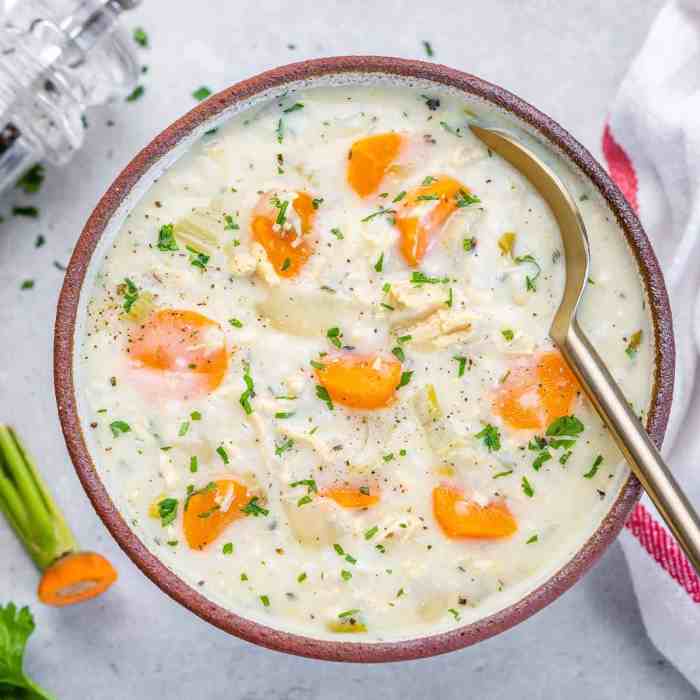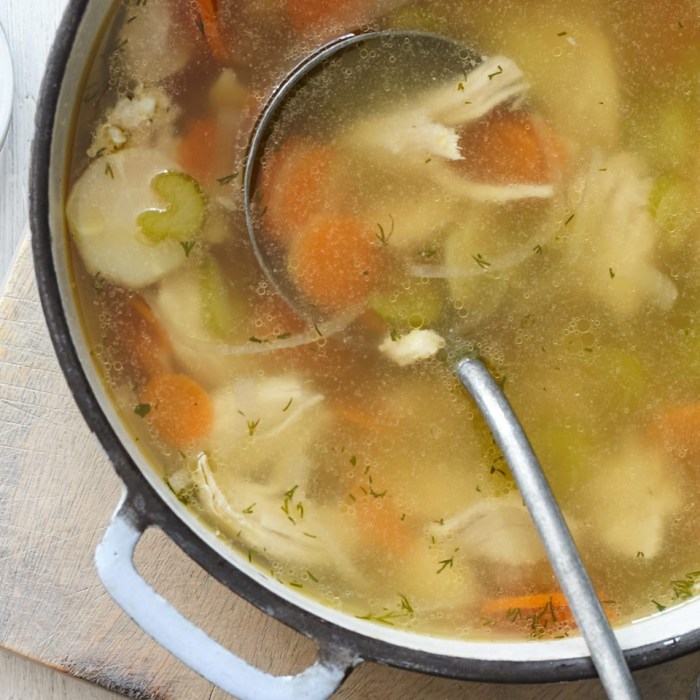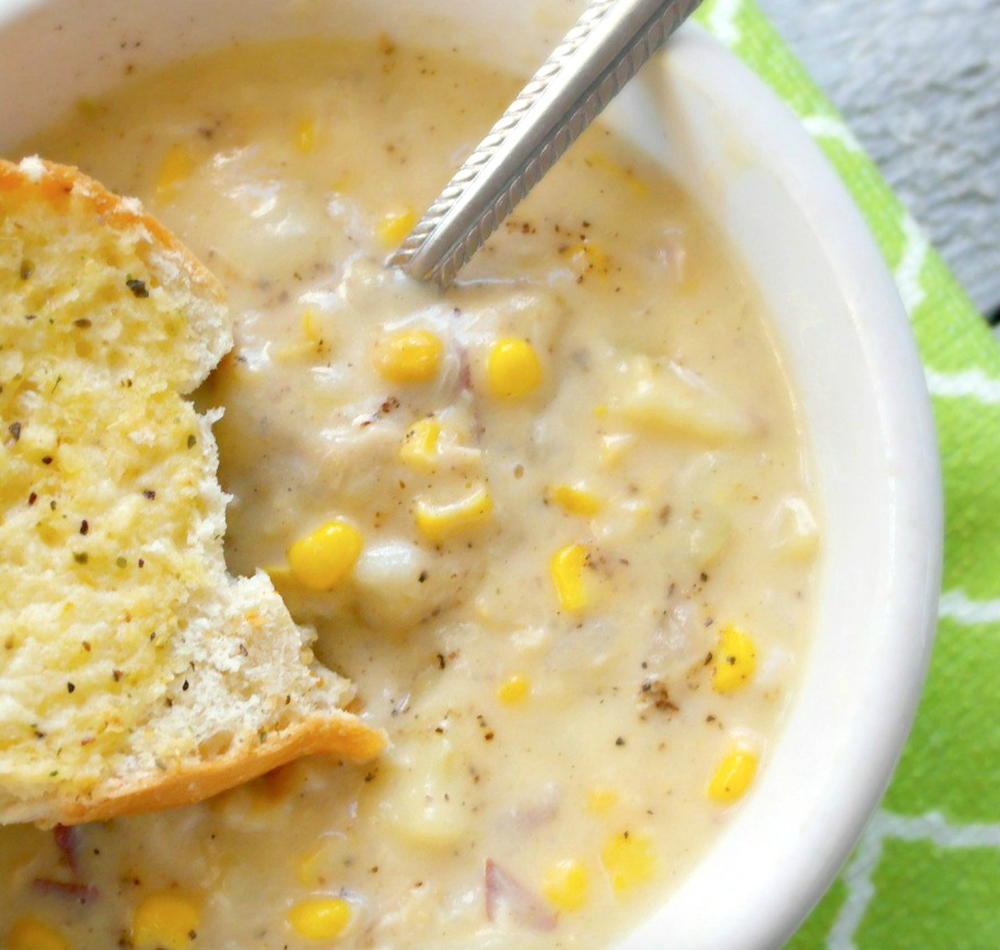Creamy Chicken and Rice Soup: Recipe Variations, Cooking Techniques, and Serving Suggestions
Creamy chicken and rice soup recipe – This article delves into the versatile world of creamy chicken and rice soup, exploring recipe variations, cooking methods, serving suggestions, and ingredient considerations to help you create the perfect bowl.
Recipe Variations
This section explores three unique variations of creamy chicken and rice soup, highlighting different flavor profiles and offering substitutions for a healthier outcome. Dietary adaptations are also discussed.
| Variation Name | Key Ingredients | Flavor Profile Description | Cooking Method Summary |
|---|---|---|---|
| Lemon Herb Chicken and Rice Soup | Lemon zest, fresh herbs (parsley, thyme, rosemary), chicken broth | Bright, herbaceous, and subtly tangy flavor; balanced with the richness of the cream. | Simmer chicken and vegetables in broth, then stir in lemon zest and herbs before adding cream and rice. |
| Spicy Southwestern Chicken and Rice Soup | Roasted red peppers, corn, black beans, chili powder, cumin | A bold, smoky, and spicy flavor profile with a southwestern flair. | Sauté vegetables and spices, then add chicken and broth. Simmer until chicken is cooked through, then stir in cream and rice. |
| Creamy Mushroom Chicken and Rice Soup | Cremini mushrooms, shiitake mushrooms, white wine, thyme | Earthy, savory, and rich flavor profile with a hint of umami. | Sauté mushrooms with thyme, deglaze with white wine, then add chicken broth, chicken, and rice. Simmer until thickened, then stir in cream. |
For a healthier version, consider these substitutions:
- Substitute: Greek yogurt instead of heavy cream. Nutritional Impact: Reduces fat and calories while adding protein.
- Substitute: Brown rice instead of white rice. Nutritional Impact: Increases fiber content and provides more complex carbohydrates.
- Substitute: Low-sodium chicken broth instead of regular chicken broth. Nutritional Impact: Significantly reduces sodium intake.
Dietary adaptations for creamy chicken and rice soup:
Vegetarian: Substitute chicken with firm tofu or mushrooms. Use vegetable broth instead of chicken broth.
- Replace chicken with 1 cup cubed firm tofu, pan-fried until lightly browned.
- Use vegetable broth instead of chicken broth.
Gluten-Free: Ensure that all ingredients (including broth and seasonings) are certified gluten-free.
- Check all ingredient labels for gluten-containing ingredients.
- Use gluten-free soy sauce or tamari if adding soy sauce.
Low-Sodium: Use low-sodium chicken broth and reduce or eliminate added salt.
- Use low-sodium chicken broth.
- Season with herbs and spices instead of salt.
- Taste and adjust seasoning as needed.
Cooking Methods and Techniques, Creamy chicken and rice soup recipe

Source: tasteofhome.com
This section compares stovetop and slow cooker methods and provides a detailed step-by-step guide for the stovetop method, along with explanations on achieving the perfect creamy texture.
Stovetop vs. Slow Cooker Methods:
- Stovetop:
- Advantages: Faster cooking time, more control over cooking temperature and consistency.
- Disadvantages: Requires more hands-on attention.
- Slow Cooker:
- Advantages: Convenient, less hands-on time required.
- Disadvantages: Longer cooking time, less control over consistency.
Stovetop Creamy Chicken and Rice Soup (Step-by-Step):
- Sauté diced chicken in olive oil until browned. Remove chicken and set aside.
- Add diced carrots, celery, and onion to the pot and sauté until softened (about 5-7 minutes).
- Stir in rice and cook for 1 minute.
- Pour in chicken broth and bring to a boil. Reduce heat and simmer for 10-15 minutes, or until rice is almost cooked through.
- Return chicken to the pot. Stir in cream and seasonings. Simmer for another 5 minutes, or until heated through.
- Stir in fresh herbs before serving.
Achieving the Perfect Creamy Texture:
- Cream: Provides a rich and luxurious texture. Heavy cream is ideal but half-and-half or even milk can be used for a lighter version.
- Flour: Creates a slightly thicker, creamier texture, but can result in a slightly pasty consistency if not carefully incorporated.
- Cornstarch: Creates a smooth, velvety texture without the slightly pasty taste that flour can sometimes impart. It requires a slurry (cornstarch mixed with cold water) to be added slowly while stirring.
Serving Suggestions and Enhancements
This section provides suggestions for complementary side dishes and ways to enhance the presentation of the soup, along with instructions for making homemade chicken broth.
Complementary Side Dishes:
- Crust bread
- Garlic bread
- Simple green salad
- Grilled cheese sandwich
- Cornbread
Enhancing Presentation:
- Garnish with fresh herbs (parsley, chives, thyme).
- Serve in bowls with a swirl of cream on top.
- Add a sprinkle of grated Parmesan cheese.
Homemade Chicken Broth:
To make approximately 8 cups of chicken broth, combine 1 whole chicken (about 3-4 pounds), 8 cups of water, 2 carrots (chopped), 2 celery stalks (chopped), 1 onion (quartered), 2 bay leaves, and a few peppercorns in a large stockpot. Bring to a boil, then reduce heat and simmer for at least 2 hours, or up to 4 hours for a richer flavor.
Strain the broth before using.
Ingredient Sourcing and Quality
This section emphasizes the importance of using high-quality ingredients and provides tips for selecting fresh chicken and rice.
The quality of ingredients directly impacts the taste and texture of the soup. Using fresh, high-quality ingredients will result in a more flavorful and satisfying dish.
Key Ingredients and Their Roles:
- Chicken: Provides the base protein and flavor.
- Chicken broth: Forms the foundation of the soup’s flavor and consistency.
- Rice: Adds texture and body to the soup.
Selecting Fresh, High-Quality Ingredients:
- Chicken: Choose chicken with firm flesh and a fresh aroma. Avoid chicken with a slimy texture or unpleasant odor.
- Rice: Select rice that is free from blemishes and has a consistent shape and size. Long-grain white rice is generally preferred for this soup.
Recipe Storage and Reheating

Source: healthyfitnessmeals.com
This section explains the best methods for storing and reheating leftover soup to maintain its quality and flavor.
Storage:
Allow the soup to cool completely before storing it in airtight containers. The containers should be shallow, wide-mouthed, and made of glass or food-grade plastic. Store in the refrigerator for up to 3 days or freeze for up to 3 months. Properly sealed containers will prevent freezer burn and maintain the soup’s freshness.
Reheating:
Stovetop: Gently heat the soup on low heat, stirring occasionally, until heated through. Avoid boiling, as this can cause the soup to become watery or separate.
Microwave: Heat the soup in a microwave-safe bowl, in 1-minute intervals, stirring in between, until heated through. Cover the bowl with a microwave-safe lid or plastic wrap to prevent splattering.
FAQ Guide: Creamy Chicken And Rice Soup Recipe
Can I use leftover cooked chicken?
Absolutely! Shredded leftover cooked chicken works perfectly. Just adjust cooking time as needed, ensuring the chicken is heated through.
How long does the soup last in the refrigerator?
Properly stored in an airtight container, the soup will last for 3-4 days in the refrigerator.
Can I freeze this soup?
Creamy chicken and rice soup is a comforting classic, perfect for a chilly evening. For a similar creamy texture but with a different flavor profile, you might also enjoy trying a recipe broccoli cheese soup , which offers a delightful cheesy twist. Returning to our chicken and rice soup, remember to simmer the broth gently to allow the flavors to meld beautifully.
Yes, this soup freezes well. Allow it to cool completely before storing in freezer-safe containers for up to 3 months.
What type of rice is best?
Long-grain white rice is ideal for this recipe, as it holds its shape well and doesn’t become mushy.


